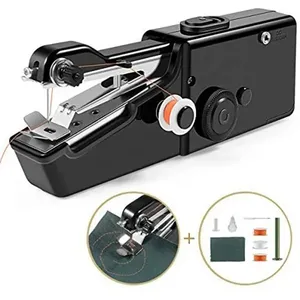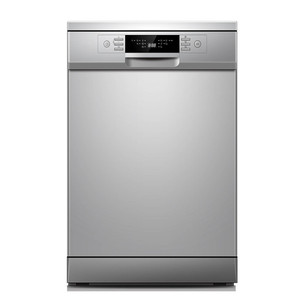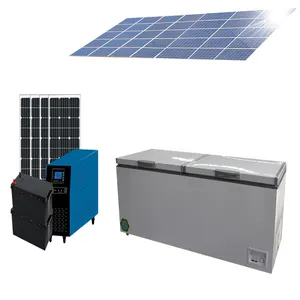Popular in your industry









Related Searches:

























Top categories
About pastry blender
Types of pastry blenders
The pastry blender is a hand-held kitchen tool with a handle and metal wires that are used to cut butter or shortening into flour for making pies, biscuits, and other baked goods. This kitchen gadget is available in different materials and designs.
- Traditional Pastry Blender: This hand tool has a handle and sturdy wires. The wires are attached to a flat, curved metal base. The wires can be straight or crisscrossed. The straight design is easier to clean, but some bakers find the crisscrossed wires are more effective at blending the ingredients.
- Stainless Steel Pastry Blender: The all-stainless steel models are more durable than the ones with a wooden handle and metal base. The stainless steel blades are less likely to break or rust when they come into contact with water. They also have a sleek, modern appearance. The stainless-steel pastry blender can have a solid metal construction or have metal blades that are connected to a handle. The blades can be straight or curved.
- Multi-Blade Pastry Blender: The multi-blade models have several parallel blades. They can be straight or curved. The straight blades are usually sharper than the curved ones. Pastry blenders with curved blades can cut through cold butter more easily. The more curved the blades, the more the butter is cut into smaller pieces. The pastry blenders with curved blades are more versatile than the ones with straight blades. Some pastry blenders have blades that are half straight and half curved.
- Pastry Cutter Wheel: The pastry cutter wheel has a handle with a sharp, circular blade. Bakers can roll the blade over the ingredients to cut them. The cutter wheel can be easier to use than the traditional pastry blender.
- Pastry Blender with Blades: Some pastry blenders have sharp blades instead of wires. The blades can be straight or curved. The blades make it easier to cut through cold butter or shortening. Pastry blenders with blades are more durable than the ones with wires.
Functions and features of a pastry blender
The pastry blender is a versatile kitchen tool with several features that improve its performance. Here are some common features of a pastry blender:
- Comfortable handle: The handle of a pastry blender is usually designed to be ergonomic. It is easy to hold and has a good grip. People can comfortably work with the pastry blender for a long time without straining their hands. The comfortable handle can reduce hand fatigue or pain while working with the pastry blender for long periods. Most pastry blenders have a wide plastic handle with a soft, non-slip outer layer. The handle is usually large enough to fit the hand comfortably.
- Sturdy wire blades: A pastry blender has wire blades that are meant to be sturdy. They are made of stainless steel to prevent rusting. The blades are sharp and strong. They are ideal for cutting cold butter into the dry ingredients. Some pastry blenders have curved blades that cut the butter evenly. They are strong enough to cut through the hard butter without bending. The wire blades are also suitable for cutting other ingredients, such as fruits, nuts, or chocolate.
- Multiple wires: The pastry blender usually has multiple wires that are parallel to each other. These wires help to cut the butter into the flour evenly. The parallel wires are strong enough to cut through the hard butter and are less likely to bend or break when used.
Scenarios of pastry blenders
Scenarios for pastry blenders are numerous because they can be used in the kitchen to make various baking recipes. Here are some of them:
- Pastry Making
The primary use of a pastry blender is to blend butter and flour when making pie crusts. It mixes the two ingredients perfectly to get a crumb-like texture, which is a crucial part of making pastries.
- Mixing Dry Ingredients
Some bakers use it to mix baking powder, salt, and flour together, creating a uniform mixture. This way, the blended dry ingredients are added alternatively with wet ones when preparing cake batter.
- Making Biscuits
When preparing homemade biscuits, the pastry blender helps in combining the flour with the fat, which in this case is usually butter. Scones are another type of biscuit that requires the use of a pastry blender, especially when combining the butter with the flour.
- Making Crumbles
When making fruit crumbles, the topping is a mixture of flour, butter, and sugar. A pastry blender comes in handy to blend them together until they form small crumbs. The crumbs are then sprinkled on top of the fruit before baking. This gives the crumble a crispy top layer.
- Making Streusel
Streusel is a German crumbly topping made from sugar, butter, and flour. A pastry blender is used to combine these ingredients, creating a crumbly texture. The streusel is then sprinkled on cakes, muffins, or coffee cakes before baking.
- Making Dutch Baby Pancakes
These pancakes require the use of a pastry blender to mix the batter. The batter is then poured over the melted butter in the pan and baked in an oven. It rises to form crispy sides, creating a delicious breakfast.
How to choose a pastry blender
When choosing a pastry blender, it is important to consider its construction and design. The pastry cutter is made up of several curved wires or blades that are evenly spaced. The blades are attached to a handle made of metal, plastic, or wood. The quality of the material and how the wires are attached to the handle can impact durability.
Handles made of plastic or wood are less durable than those made of stainless steel. If not properly handled, the wires might pull away or break from the handle. This can be frustrating when mixing the dough. A pastry cutter with a handle made of stainless steel is more durable than one made with plastic or wood. It is sturdy and can withstand regular use without bending or breaking. Wooden handles provide a comfortable grip but they are not dishwasher safe. They can crack or warp with time, especially if not properly dried after washing. Plastic handles are affordable but can crack or break when exposed to high heat.
Buyers can also choose between a pastry cutter with straight or curved blades. Straight blades are more common and are ideal for cutting butter or shortening into flour. Curved blades are best for mixing wet and dry ingredients.
The size of the pastry cutter is also important. It can have a small, medium, or large head. Smaller heads are lighter and easier to maneuver. They are ideal for those with arthritis or carpal tunnel. Large heads can cut butter into bigger pieces at a go, reducing the time taken to mix the dough. A medium-sized pastry cutter is versatile and can be used for a wide range of tasks.
Pastry blender Q & A
Q1: How should a pastry blender be cleaned?
A1: After use, soaking the pastry cutter in warm, soapy water will help loosen any dry dough. Then, scrub the pastry cutter with a brush to remove any bits that are stuck in between the wires. The tool can then be dried with a towel or air-dried on a dish rack. To prevent rusting, it is important to ensure that the pastry cutter is completely dry before storing it.
Q2: What are some common signs that a pastry cutter is ready for replacement?
A2: If some of the wires are bent or broken, it is time to replace the pastry cutter. A damaged pastry cutter can scratch the bowls and dishes when used, and it will not work well to cut the butter into the flour.
Q3: What is the best material in a pastry cutter?
A3: Stainless steel is a preferred choice for pastry cutters because it is strong, durable, and resistant to rust. It is also dishwasher safe.
Q4: Can a pastry blender go in the dishwasher?
A4: It is important to check the manufacturer's instructions to see if the pastry blender is dishwasher safe. This is because some wooden handled pastry blenders may not be able to withstand the high heat of the dishwasher.
Q5: What is the purpose of a pastry cutter?
A5: A pastry cutter is a kitchen tool that is used to mix the fat in the dough so as to make it flaky and tender. It works quickly and keeps the fat cold, which is important for pie, biscuit, and scone doughs. When the dough is baked, the pieces of fat steam in the heat of the oven and get trapped between the layers of dough. This creates little pockets that make the pastries extra tender and flaky.



























